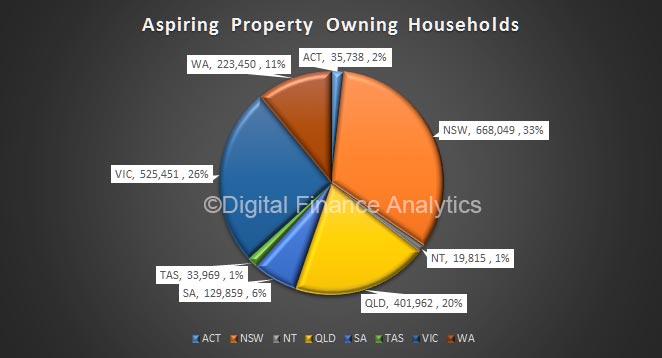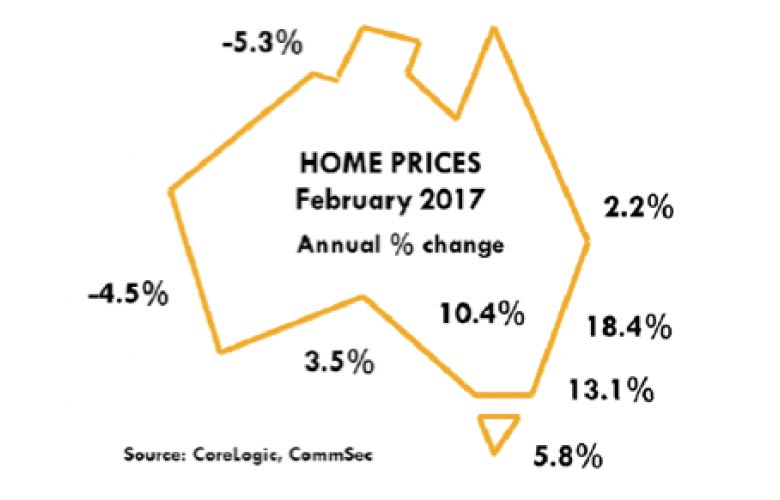With the current cycle in its 58th month, property price growth hit a new high in February, with prices rising 1.4 per cent to be up 11.7 per cent for the year.
The monthly CoreLogic Hedonic Home Value Index showed Canberra led the way in February with prices rising 3.2 per cent, and Sydney prices were up 2.6 per cent for the month.
Darwin prices fell 4.3 per cent for the month, Perth prices were down 2.4%, and Brisbane eased 0.4 per cent.
Growth conditions have accelerated since mid-2016, said CoreLogic head of research Tim Lawless, as lower interest rates and strong demand from investors drive price increases.
“Growth conditions have been rebounding since the middle of last year when, on two separate occasions, interest rates were cut, and investor demand commenced trending higher,” he said.
Lawless said before the rate cuts, price growth was moderating.
“Prior to capital gains accelerating half way through last year, the growth trend had been moderating, reaching a cyclical low point over the twelve months ended July 2016 when the annual change in capital city dwelling values slowed to 6.1%,” said Lawless.
The February results mark a new high point in the current growth cycle, said Lawless.
“The annual growth rate across the combined capitals hasn’t been this strong since the twelve months ending June 2010,” he said.
Lawless said, “In Sydney, where the annual rate of growth is now 18.4%, this is the highest annual growth rate since the twelve months ending December 2002 when the housing boom of the early 2000’s started to slow.”
The current growth cycle is now approaching five years, being in it 58th month, according to CoreLogic. Since property prices in capital cities began rising June 2012, dwelling values have increased by a cumulative 47.3 per cent, ranging from a 74.9 per cent capital gain in Sydney, to a rise of 6.0% in Perth.
Lawless said the high price growth was bad news for those hoping to get onto the property ladder.
“The strong growth conditions across Sydney have provided a substantial wealth boost for home owners, however, the flipside is that housing costs are becoming increasingly out of reach,” he said.
Lawless said in Sydney, based on September 2016 numbers, dwelling prices are almost 8.5 times higher than gross household income. The figure for Melbourne is 7.1 times.
Craig James, chief economist of CommSec, wrote, “It may be no surprise to see that home prices continue to lift across most capital cities. But what was clearly surprising was the size of the lift in prices.”
“Policymakers will keep a close eye on the housing sector the early part of 2017,” said James, saying they “will prefer to see more balanced house price growth across the nation.”













